I arrived in Paris on Thursday and caught a cab to place de le Bastille. The most prominent structure there now is the Opera, which is glaringly modern.

From there, I took a long walk through Marais, which included a light lunch (an omelette with Roquefort and walnuts) at a chic teahouse called Le Loir dans le Theiere (the doormouse in the teapot).

Its walls sporting advertisements for local theatre and music events plus a hand-painted Alice in Wonderland themed mural, Le Loir appears to be a popular spot for Parisians of all ages; there was hardly room to move around the tables, and I was seated at what was probably the last open chair, at a table with a few teenagers visiting from Switzerland. The omelette and the tea were sublime.
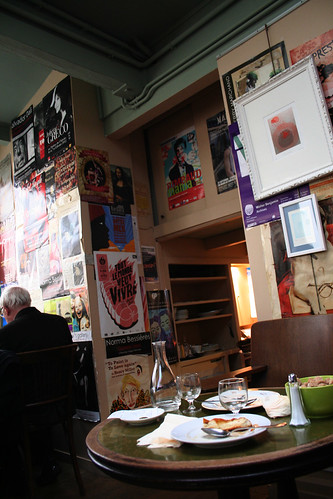
I strolled from Marais across the river and made a lap around the east end of Île de la Cité.
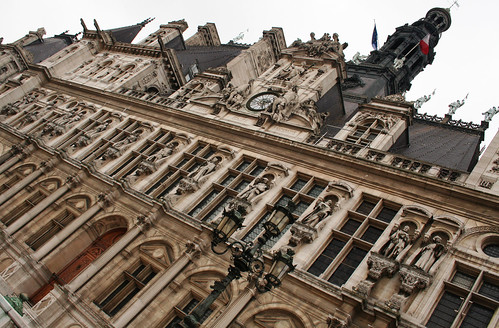
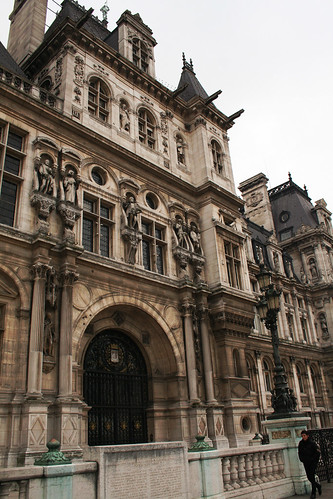
Most notably, I circled around Notre Dame. Check out those flying buttresses.
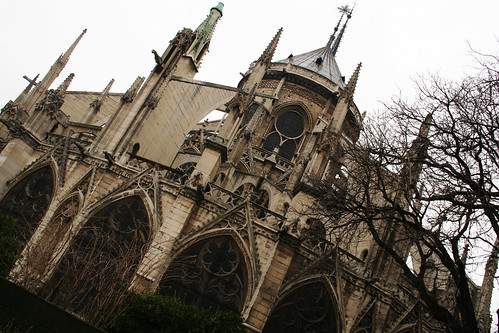
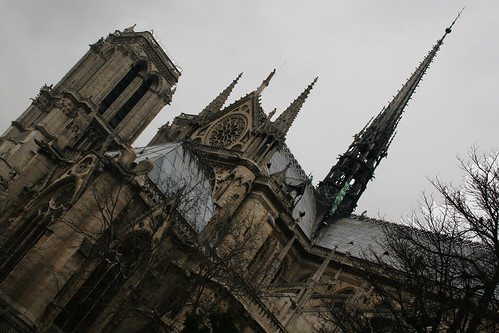
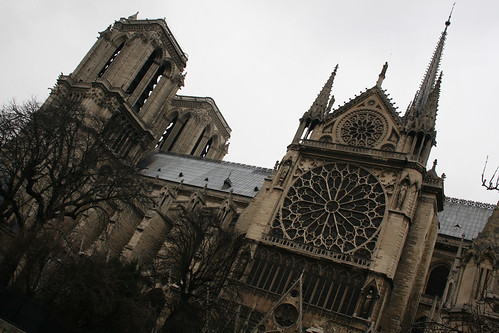
And around to the facade!
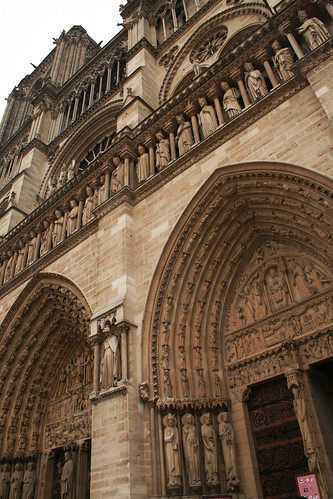
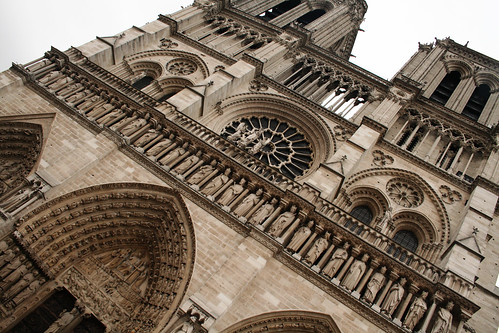
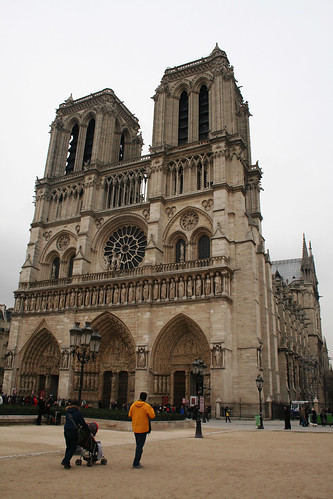
After my walk, I hopped on the metro to my hotel on rue de Rennes. I didn't get much else done that day; jet lag was starting to set in, so I wandered out for a quick dinner and went to bed soon after. The jet lag didn't last, fortunately, and I woke up the next morning ready for a very long day.
I had a chocolate pastry for breakfast at a corner patisserie, and then set off for Île de la Cité via metro. I started at Sainte-Chapelle, the outside of which is a little dull (the Gothic style is similar to Notre Dame but on a smaller scale) and the inside of which is beyond amazing.
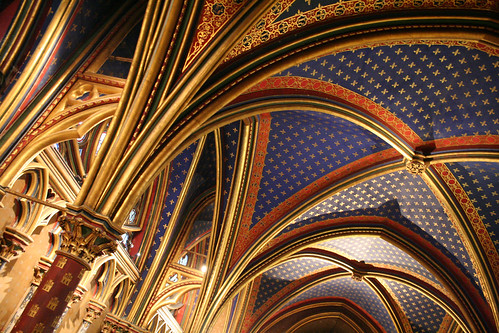
The first floor is notable for the brightly-painted ceiling and arches.
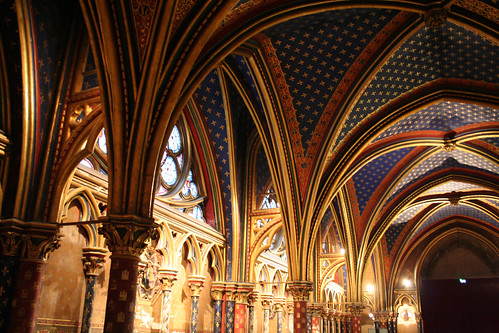
The second is notable for some of the most intricate stained glass you'll ever see. The 14 windows depict the entire Christian history of the world, from Genesis to the Apocalypse.
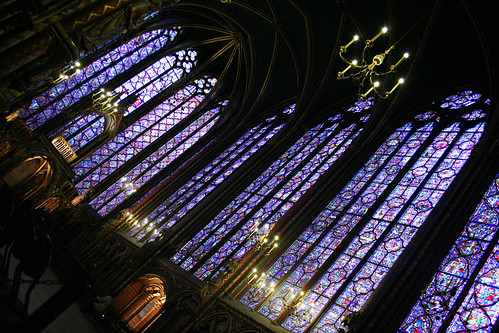
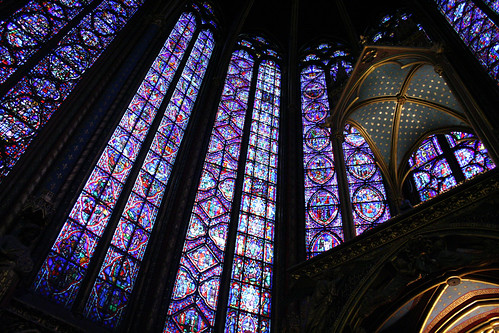

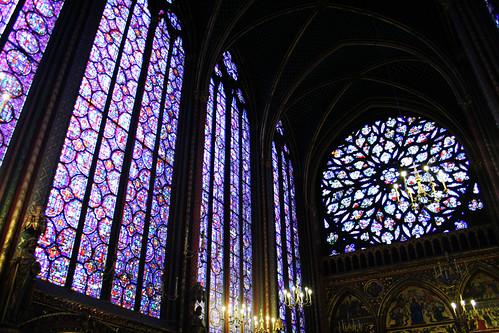
Sainte-Chapelle was comissioned in the 13th century by King Louis IX to house several relics, including the Crown of Thorns. These relics are now kept in a more secure location, though it is occasionally brought out for display in the elevated pulpit.
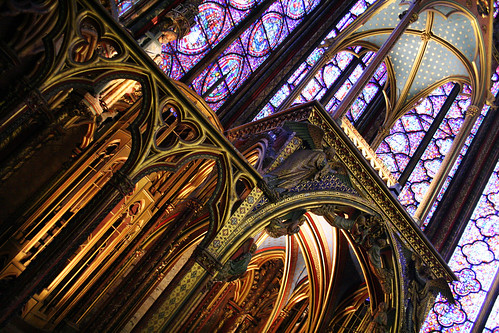
(Open this one up for a higher-resolution view, to see more detail of the stained glass:)

After Sainte Chapelle, I returned to Notre Dame and went inside.


Notre Dame (“Our Lady”) de Paris is another Gothic cathedral, with architectural features similar to the duomi of Siena and Milan. Construction began in 1163 and continued until roughly 1345, though it has undergone frequent repairs, remodels, and reconstruction (particularly after the French Revolution, during which many historical sites were vandalized). Its 7,800-pipe organ (not pictured, though goodness knows I tried), made by François-Henri Clicquot, was installed in the 1700s and rebuilt a century later by Aristide Cavaillé-Coll.
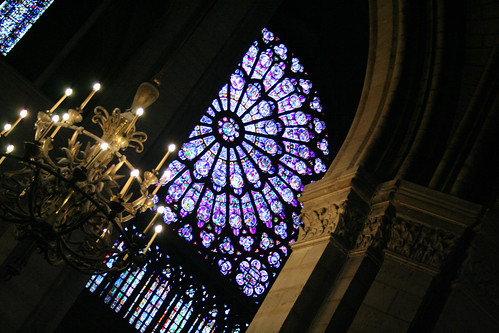
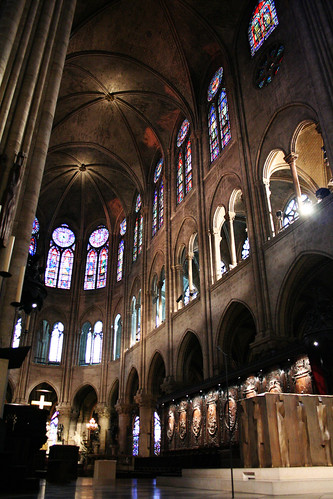
Inside, there is a memorial to Joan of Arc, who led the French army during the Hundred Years' War. The decision to declare her a martyr was made at Notre Dame some 25 years after her death.
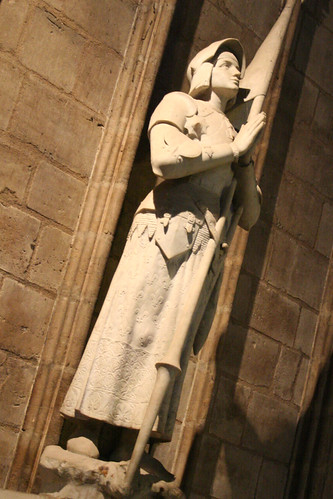
Look at the painted detail of the stained glass (close-up from the treasury).
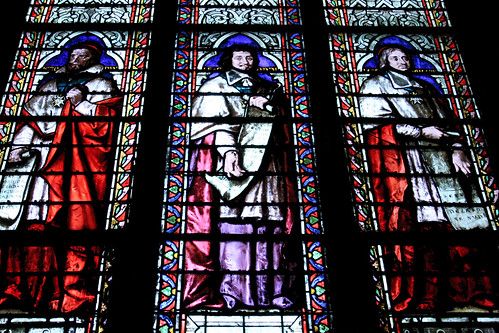
Leaving the cathedral, on the wall to the right of the door, there are statues of angels and a saint (I haven't been able to find out who) holding his own decapitated head.

Who are all these guys on the front (again, open it up for a higher resolution view)?

These twenty-eight statues represent the Kings of Judah, distant ancestors of Mary and Jesus, though they also are said to represent historical kings of France. Fun fact: the statues were actually beheaded during the French Revolution. One assumes that new heads were sculpted some time after, as most of the heads were not even recovered until 1977.
That is all for the moment! Check back soon for further adventures in the City of Light.

No comments:
Post a Comment